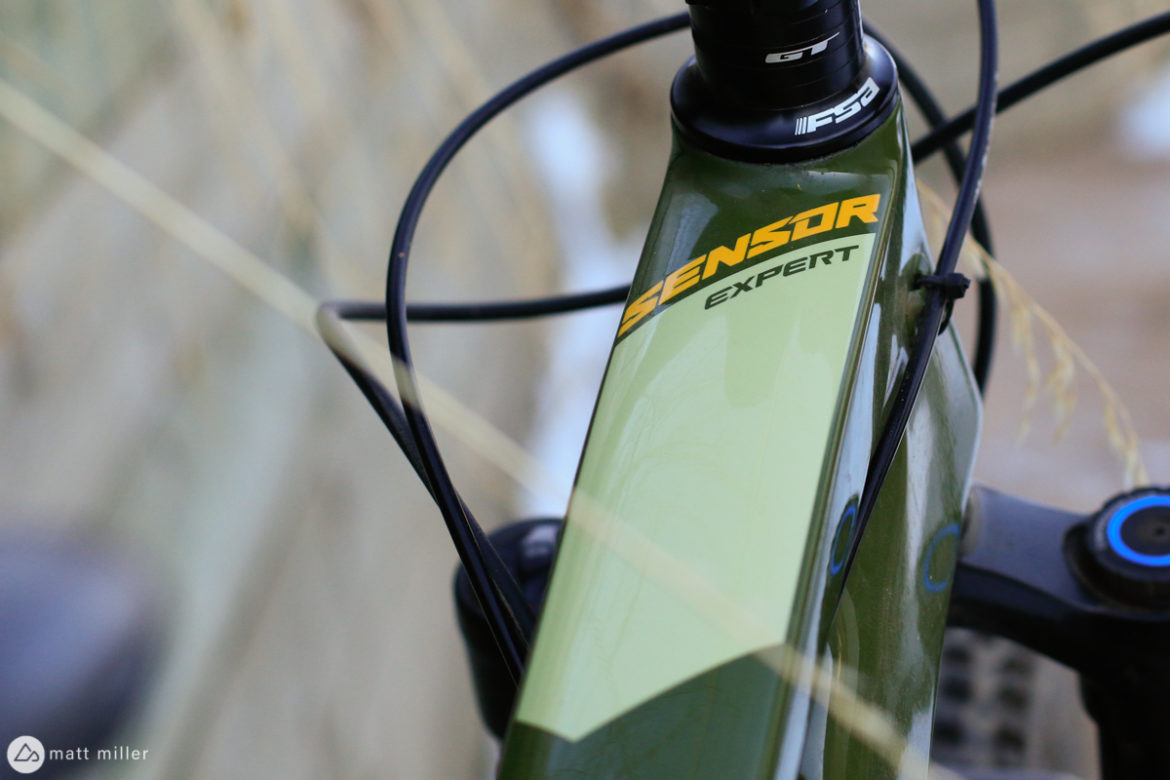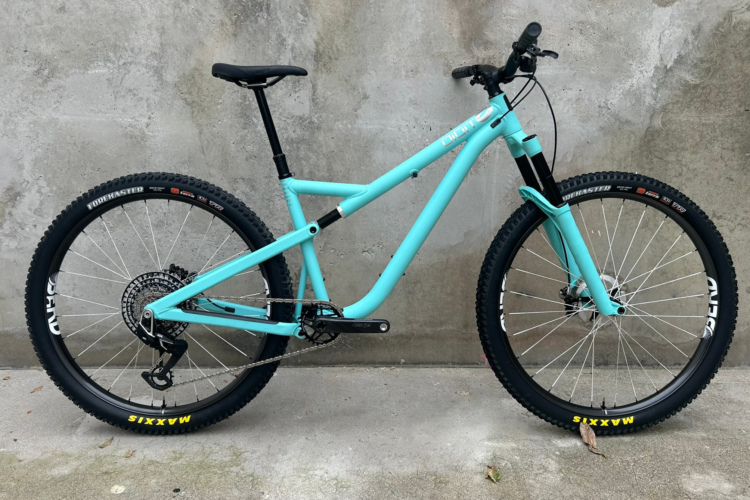
Towards the tail end of summer, GT sent out its trusted trail bike, the Sensor, for me to test on my local trails. While a lot of bikes are race bred in the sense that they are light and agile for XC racing, or brutish and forceful for enduro, trail bikes can sit in an unappealing segment for many, kind of like the middle child in a family.
Racing sells, and the market has been enduro heavy for years, drawing eyes to bikes that are often too much for most riders. I’m guilty of this as well, and I am really happy when I have that extra inch of travel in certain cases, but a bike like the GT Sensor just happens to be the right tool for the job in a wider spectrum than most XC or enduro bikes.
Shortly after I received the bike, I wrote about the differences between the 2020 and 2019 Sensor models. This generation debuted in 2019, and since then, GT has added 10mm more travel on the fork and a shorter offset, bringing it to 140mm, and they added the piggyback RockShox Deluxe Select+. The Sensor also gained the new SRAM G2 brakes, a powerful upgrade from the previously specced Levels.
Specs

- Travel: 130mm / 140mm (R/F)
- 29-inch wheels
- Carbon front triangle, aluminum rear
- 76° seat angle
- 65.5° head angle
- Threaded BB
- Boost-spaced rear axle
- Linkage Tuned Suspension platform
- Flip-chip adjustable geo
- Sizes XS – XL
- Weight: 32.6lbs (size M, Expert build)
- Price: $2000 – $5500 ($4350 tested)

Ride Impressions

The Sensor has been in GT’s lineup for a long time and this generation saw a return to the LTS suspension, which is a GT-tuned Horst link platform. On this version, GT says the platform is engineered for braking performance, traction, and bump absorption, with a progressive leverage ratio, which sounds on par for a shorter-travel trail bike that needs to be a little bit wiser with how it uses its suspension.

The Sensor, like the Force and Fury are designed with simplicity in mind, with elements like the Groove Tube – a channel on the top of the downtube for external cable routing which makes for easy swaps and service. There’s also a threaded bottom bracket, and an overall lack of proprietary fittings and components.
The Sensor leaves flashy features in favor of functionality and practicality and that’s what I came to appreciate about the bike.

I started riding the GT toward the tail end of summer after spending a lot of time on cross-country bikes. I was happy to find that the Sensor didn’t give up a lot of pedaling efficiency compared to the more XC forward rigs I had been riding. As I mentioned before, the Sensor is specced with a RockShox Deluxe Select+ now, with a two-position lever. It’s either in ‘open’ mode or ‘locked out.’ Since lockout modes are usually only good for pavement anymore, I was a little skeptical about having the bike in open mode all the time.

The rear suspension maintains a solid amount of anti-squat and efficiency though, and it made the Sensor an easy choice for all-day backcountry rides when I was looking for just the right amount of bike. Over rocky climbs, the suspension dips smoothly into its mid-stroke for more traction and the small-bump sensitivity feels great, partly due to the rear axle pivot between the dropout and chainstay.

Aside from the componentry, the Sensor’s geometry allows it to hit high above its weight class. The steep 76° seat angle puts the rider in a comfy and upright pedaling position. The reach is marked at 445mm in the low position, but doesn’t feel as long with the shorter 45mm stem.
It’s hard to say what is an average range for the head angle on a trail bike anymore, with bikes around this travel range varying from 67° down to 65°. For what it’s worth, the 65.5° head tube angle on the Sensor suits it well, and I noticed the same thing on it that I noticed on the new Tallboy when I rode that earlier this summer: a trail bike doesn’t have to be limited by its geometry anymore. With the Sensor, I ventured onto some pretty gnarly rock gardens and rock rolls that I wouldn’t have ridden on a trail bike from a few years before.
The shorter suspension means that you probably won’t be able to ride it as fast as you can on an enduro bike, but you can still ride a shorter-travel trail bike through some scary stuff without worrying about going OTB. I was pretty happy to have a trail bike around with a serious plow factor.
Component check
It’s obvious to see where GT put the most bang for their buck on the Sensor Carbon Expert build that I tested, and that is right in the fork and shock. The Pike Select+ is an incredibly smooth feeling fork, and so is the Deluxe Select+ shock. These two are the prized components bolted to the Sensor frame.

Sensor Carbon Expert buyers also get a pair of SRAM G2 RSCs, which is a pretty sweet deal. Compared to the newest Shimano XTs, which I’ve been riding on a different review bike, they feel like they have a little less power and bite, but they do feel like a stiff and consistent brake. Personally, I like the way that the Guide RSCs feel, but hopefully, the G2s are an improvement in reliability, and they are certainly an upgrade from the Levels, previously specced on the Sensor.
My breakthrough moment with the Sensor came when I threw on a set of carbon wheels that came in for review. The Sensor’s wheels are made up of Stan’s Flow S1 rims, laced to OEM Formula hubs, and came set up with tubes. It was quite transformative when I put the set of tubeless tires and carbon wheels on the Sensor. The trail bike came to life with way more speed and personality, not to mention it shaved off a good chunk of weight. If I scooped up a Sensor, I’d start saving immediately for a set of aftermarket wheels.

GT has also started to make their own branded, in-house dropper post called the DropKick. Set-up was super easy with the post. Its return was quick and consistent, and I never had an issue with it, although it is a very light throw on the remote.
Overall, the build feels wisely specced and if I was after a Sensor, I’d skip the top-shelf Carbon Pro for a Carbon Expert and put the extra grand toward a set of aftermarket wheels. The RockShox bits on the Expert feel as good, if not better than the Fox suspension Fit4 damper specced on the Pro. Plus, how good does glossy OD green look? Really good.
Final word

It’s no enduro plow and it’s not an XC arrow; the Sensor sits smack in the middle. For most trail riders, I’d bet that the Sensor would satisfy all of their needs, from all-day rides, to fun and flowy bike park trails, and would take on a stage race with pride.
Watch the video review here:
⭐️ Find the 2020 GT Sensor at Jenson USA.



















